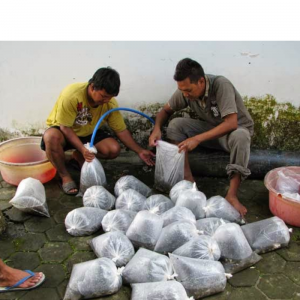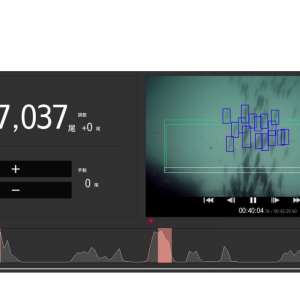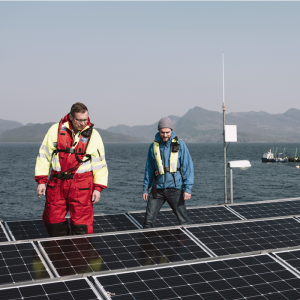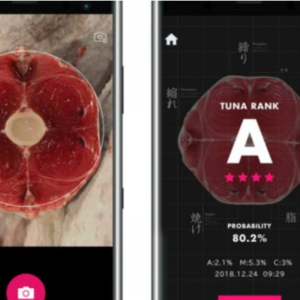
Blockchain Expands its Aquaculture Presence with Shrimp and Salmon
| Fri, 03 Sep 2021 - 16:04
For years, aquaculture businesses have weighed the merits of adopting blockchain technology — a digital method of securely storing and sharing swaths of data. Such an innovative tool has potential to advance the aquaculture industry, as it enables a distributed ledger to record product movements and other data, allowing for more efficient and accurate traceability of seafood sources.
With sustainability, animal welfare and food quality increasingly top of mind with consumers, blockchain offers one way for suppliers of premium products to differentiate themselves from the competition. But as some suppliers and experts note, deploying the technology presents challenges and blockchain is only part of the solution to eliminating food fraud.
In a June release, the Sustainable Shrimp Partnership (SSP) said its members were expanding their use of blockchain technology. Separately, salmon producer Nova Sea announced in June it was moving toward implementing blockchain – another potential sign that more aquaculture producers could embrace this emerging technology.
Also read: Prawn Farm Scales New Heights With High-Tech Vertical System
‘It’s all about transparency’
In June, SSP — a sustainability initiative led by Ecuadoran shrimp producers — announced that Grupo Nueva Pescanova, one of its members, had expanded the use of blockchain technology to all of its seafood products. This demonstrated a commitment to ensuring the quality and provenance of its products, said Pamela Nath, director at the SSP, who noted this type of product assurance was necessary.
“It’s all about transparency, which is needed in the shrimp industry,” said Nath.
To maximize blockchain deployment efforts, SSP developed an application that allows consumers to access key information from each product and track its journey from beginning to end by scanning a Quick Response (QR) code. Surveys from GlobeScan cited by SSP indicate that consumers want such traceability information, which Nath said can yield a key benefit for the industry: an improved consumer connection.
“The technology also allows us to highlight the fundamental role of the producers, which most of the time, due to the complexity of the supply chain, goes unnoticed by the consumers,” Nath said.
Nath added that SSP’s members have been pioneers in implementing blockchain technology in shrimp production, part of a drive to increase awareness of the environmental and social practices of the organization’s members. Since these companies are trailblazers in this field, the rollout process has been a learning experience for everyone involved. On one hand, technology providers must get up to speed on the industry, the complexity of its supply chains and traceability requirements. Meanwhile, the industry must master the technology and determine how to align business to blockchain requirements.
The successful results of these efforts may benefit more than SSP members. “This learning experience, from both sides, has given the opportunity to other seafood industries to join the technology. We are sure that there will be many more to come,” Nath said.
Also read: Keeping Watch on The Water Source

This IBM infographic details the supply chain points that can be tracked and secured with blockchain technology.
Tackling freshness and fraud
Also in June, Nova Sea, one of the largest salmon farmers in Northern Norway, announced that it joined the Norwegian Seafood Trust — a national seafood tracking network enabled by multinational technology giant IBM. Launched by the Norwegian Seafood Association and Atea in 2020, the network uses IBM blockchain technology to create a permanent digitized record of each transaction as products move through the supply chain, allowing fish farming companies like Nova Sea to share data with consumers worldwide. Each member of the chain can also “download and use an app to scan each salmon lot at each point of receipt.”
Although promising, there are some still some snags with the system. Espen Braathe heads IBM Food Trust Europe, which is working with the Norwegian Seafood Trust to implement the technology. He noted that the seafood supply chain can stretch from islands in Norway’s north to stores in the United States and elsewhere around the world.
“It’s a long supply chain. They [the industry] need to make sure they maintain integrity of that entire supply chain,” Braath said.
Using blockchain combined with another technology, the Internet of Things (IoT), can play a key role in preventing product mislabeling, either deliberately or accidentally. Blockchain records transactions as a product changes locations or goes through a processing step. IoT provides the means to automatically capture such movement through RFID (radio frequency ID) tags or embedded sensors, which communicate wirelessly.
Reducing food fraud could be one outcome of implementing this tech twosome. The blockchain/IoT combination makes it possible to identify lower-quality products that are mislabeled as premium ones, according to Braathe.
By adding a third technology to the mix — artificial intelligence (AI) — and using IoT sensors to measure temperature and other environmental parameters, it may be possible to even optimize logistics.
“We’re working on now connecting this [blockchain] to freshness,” said Braathe. “If we can maintain a complete cold chain and monitor the cold chain, then we can actually use it to determine the freshness of the product.”
With this innovation, it could mean less need to follow a “sell-by” date. Instead, everyone along the supply chain could have access to reliable data on temperatures for a given product batch.

Sustainable Shrimp Partnership members use blockchain technology in shrimp production to increase awareness of their environmental and social practices. Photo courtesy of SSP.
Also read: RAS Disinfection Strategies
‘Communication and promotion is key’
Work on freshness monitoring continues, but much groundwork still needs to be completed before blockchain becomes mainstream. For instance, since supply chains are international, Braathe noted the governance standards on blockchain data exchange need to be harmonized internationally — something IBM and other industry players are actively pursuing. In the case of IBM’s technology, whoever uploads data retains control over it and determines who can see it.
Blockchain and other technologies are expanding their presence within aquaculture. But Nath acknowledged that many initiatives, like the sustainability-based work being championed by the SSP, struggle in the marketplace. Success in efforts like this, she predicted, comes from influencing consumers’ buying choices, thereby impacting the market.
As Nath said, in trying to reach consumers, “Communication and promotion is key to educate and, through knowledge, [help them] make an informed decision.” Ultimately, blockchain technology could help achieve that goal by putting information right into the hands of consumers.
Source: Global Aquaculture Alliance






















